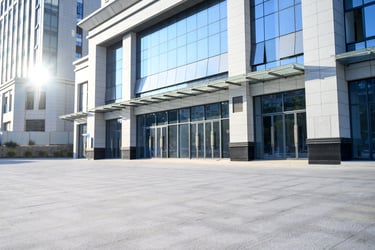Related Posts



You are about to leave Risk Strategies website and view the content of an external website.
You are leaving risk-strategies.com
By accessing this link, you will be leaving Risk Strategies website and entering a website hosted by another party. Please be advised that you will no longer be subject to, or under the protection of, the privacy and security policies of Risk Strategies website. We encourage you to read and evaluate the privacy and security policies of the site you are entering, which may be different than those of Risk Strategies.

Many of us don’t think about what will or won’t be covered by insurance until it’s too late. Whether due to unexpected of catastrophic storms or less dramatic, relatively expected issues and incidents, buildings are susceptible to damages both inside and out. Those in the real estate business – buyers, sellers, managers and developers – can mitigate losses with some common-sense tactics and basic preparation. Preparing your property and your policies for the worst is the best way to face any storm.
Earth, Wind and Fire
The most common claims that come across my desk stem, in one way or another, from weather, with water and wind damage topping the list for typical weather-related claims in climates both cold and hot. For instance, the Northeast faces threats of burst pipes and exploding sprinklers in the colder weather. And structures in high-wind zones such as Texas and Florida are particularly susceptible to roof and other outdoor damage from trees downed by wind.
While these type of incidents certainly can’t be qualified as everyday wear and tear, they are far from uncommon and property owners should stand ready to reduce the risk and remediate incidents. Proper weatherization and prudent landscape management are obvious, and vital, preventatives for winter and windstorms.
Still, you can’t prepare for everything because damage and claims often come from unfortunate happenstance or tenant neglect. Leaking dishwashers, clogged drains and broken washing machines cause harmful water damage, and left unsolved, can create larger problems – i.e. mold, which is not covered under standard property insurance.
And let’s not forget fire. You might be thinking wildfires, but from 2012-2016, 172,100 buildings in the US have caught flame due to cooking equipment, causing $1.1 billion in property damage. Add in sources of ignition outside the kitchen - space heaters, smoking and curling irons – and those numbers go up quickly.
Expect the Unexpected
Natural disasters, generally, are sharply on the rise. 2017 was a record-setting year and 2018 is right on its heels. Hurricanes, earthquakes and floods are considered catastrophic events. Damage from them is not covered in the way damage from a standard Nor’easter is; you will need to carry additional sublimits to protect your property and assets. Amid the recent tragedy, the bright spot for our California clients is that wildfire damage is still covered under fire loss in typical property policies. It is not seen as a catastrophic exclusion – for now.
Get Ready
No matter the risk, there are a few universal truths to reducing risk and being covered on important claims. Here are some best practices based on my experience:
To evaluate your risk and prep your investments for all this world will throw at them, get in touch today. You can reach the real estate team at realestate@risk-strategies.com.
The contents of this article are for general informational purposes only and Risk Strategies Company makes no representation or warranty of any kind, express or implied, regarding the accuracy or completeness of any information contained herein. Any recommendations contained herein are intended to provide insight based on currently available information for consideration and should be vetted against applicable legal and business needs before application to a specific client.


